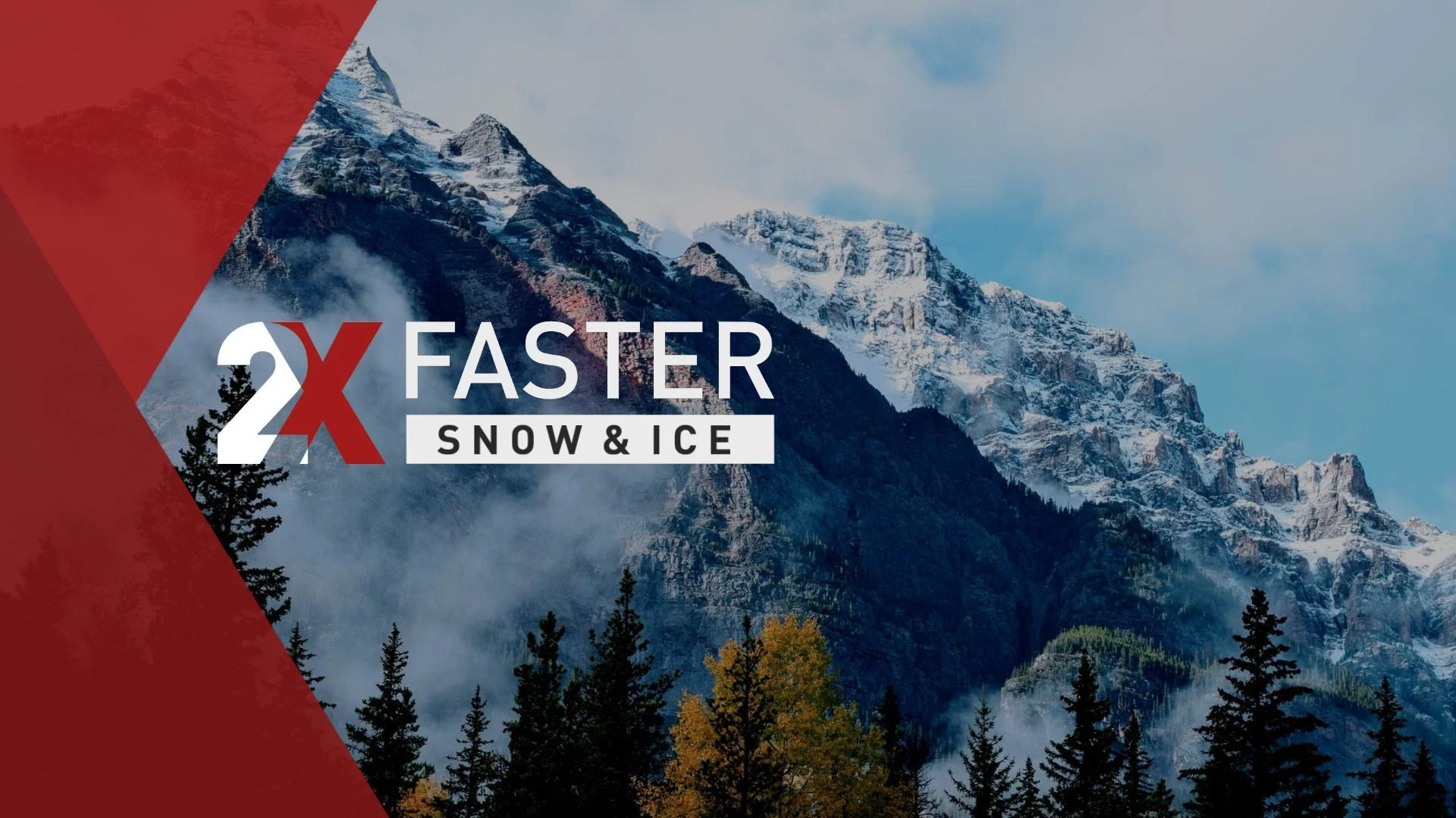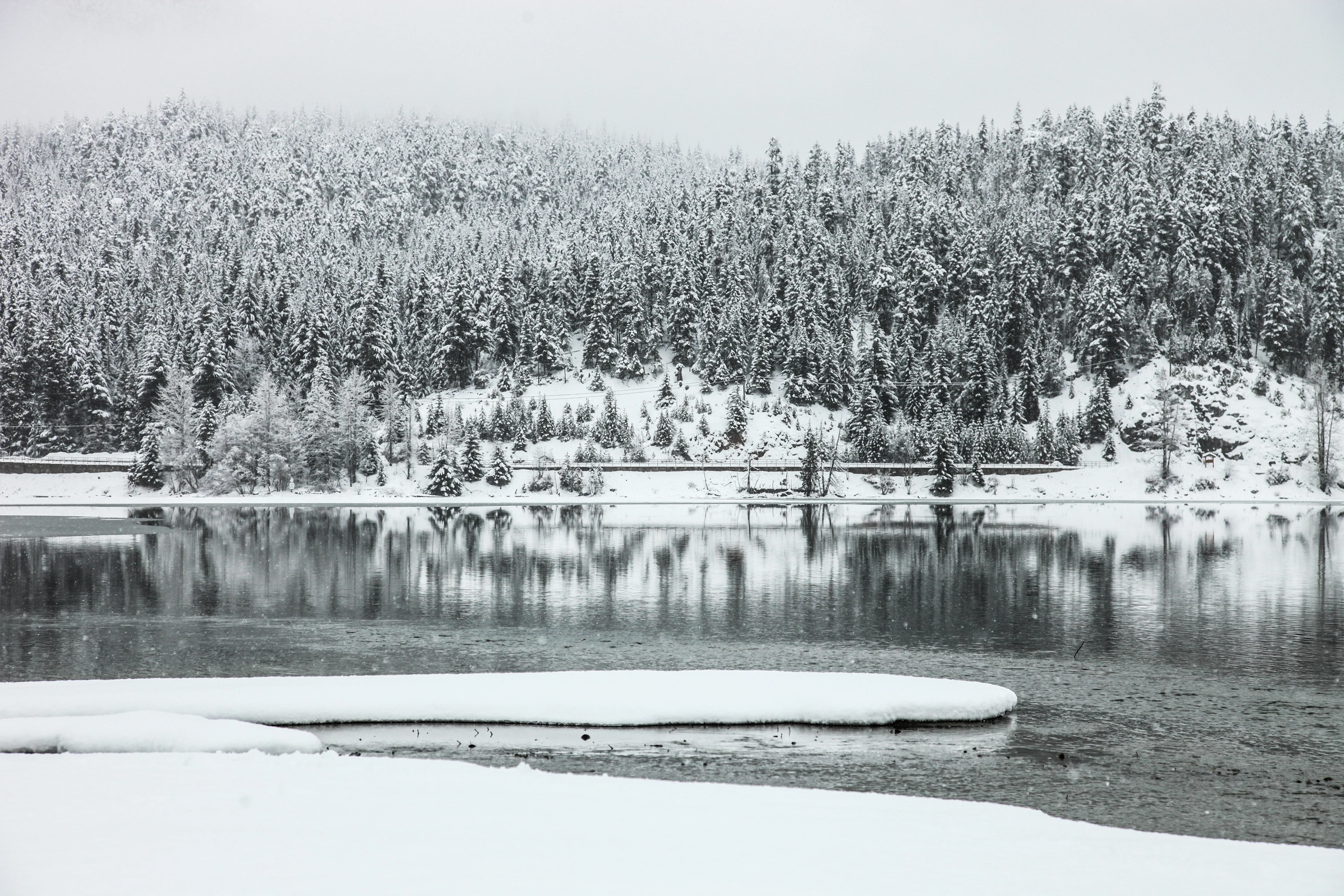
2X Faster: Glaciers disappear as more rain falls in winter
The Weather Network is rolling out a three-part series that will analyze how this report will impact each region of the country. This is the final installment of our 2X Faster series and will address how Canada’s snow, ice, and glaciers are impacted by global climate change.
More winter precipitation is falling as rain instead of snow, less snow is staying on the ground, and glaciers are rapidly melting. The new climate change report released by the Canadian government confirms that the nation is warming twice as fast as the rest of the world, and the iconic wintry landscape is rapidly changing.
The report states that snow cover has decreased between 5 to 10 per cent per decade since 1981 due to later snowfalls and earlier spring melt, with the exception of southern regions in Saskatchewan and parts of British Columbia and Alberta.
RELATED: More flooding, rapid sea level rise in Canada
The portion of the year with snow cover has decreased across the majority of Canada, as well as the amount of snow that accumulated in each season. The report states that changes to snow and ice over the next few decades are virtually certain since temperatures are projected to increase under all future scenarios of carbon dioxide emissions.

Credit: Ales Krivec (Unsplash)
Air temperature determines whether precipitation falls as rain or snow and also influences the timing, duration, and intensity of snowmelt periods. As a result of warming temperatures across the globe, more winter precipitation is falling as rain in Canada, and the snow that does accumulate on the ground is melting earlier and more quickly.
Snow cover is an essential component of the Canadian landscape and appears for a few months of the winter in southern regions and lasts for up to 10 months each year in the Arctic. While snow is a defining characteristic of some sectors of Canadian tourism, and critical for a thriving ski industry, snow is also necessary for winter travel in many regions where winter roads are constructed using snow to connect remote communities and mines, particularly in the Northwest Territories, northern Manitoba, and northern Ontario.

Credit: Jamie Fenn (Unsplash)
Projections show that it is very likely that snow cover duration will decline to through to 2050 due to warming temperatures. Southern Canada will see a reduction of snow cover duration by about 5 to 10 per cent per decade, will minor changes in snow accumulations are projected for northern Canadian regions. During the winter months, projected snow cover reductions will be greatest across southern Canada due to warming temperatures resulting in less snowfall and more rain.
SEE ALSO: Our icy World Heritage sites will soon look very different
The Maritimes and British Columbia are set to see extensive reductions in snowpack and could see a total loss of 15 to 30 per cent between 2020 and 2050. Less significant decreases are also projected for the Prairies, Ontario, and Quebec where the warming temperatures will cause more winter precipitation to fall as rain.
Winters with less snow coverage is concerning for farmers, as snow adds necessary moisture to the soil during the winter months which cannot be made up with spring rainfall. Limited snow coverage throughout the winter months can even impact the fire warnings that appear during the spring when dry weather heightens the chance of fires igniting.
DISAPPEARING GLACIERS AND MELTING OCEAN ICE
Over the past thirty years, the amount of land and marine areas in Canada that are typically covered by snow and ice have decreased due to delayed snow cover in the fall and earlier snowmelt in the spring.
Significant reductions in sea ice area over the period 1968 to 2016 resulted in 5 to 20 per cent reductions per decade and was evident in the summer and fall months across the Canadian Arctic.
WATCH BELOW: CANADIAN ARCTIC COULD BE ICE-FREE BY 2050
The report states that recent glacier mass loss rates are unprecedented, and the receding glaciers have already left visible changes in the Canadian landscape. While it may seem that Arctic warming is a distant problem because most Canadians live in southern regions of the country, melting glaciers have direct impacts on the nation.
Declining glacier mass in western Canada will impact the magnitude and timing of water flowing in rivers, streams, and channels, which will impact flooding dynamics and the amount of freshwater that humans have for a drinking resource.
Several famous Canadian glaciers are at risk of completely melting by the end of the century. Projections show that unless global carbon dioxide emissions are dramatically reduced, glaciers in the western Canadian interior will lose more than 90 per cent of their 2005 volume.
WATCH BELOW: ICEFIELDS IN THE CANADIAN ROCKIES ARE RETREATING AND THE PAST 20 YEARS HAVE BEEN UNUSUAL
Numerous glaciers in the central and southern Canadian Rocky Mountains have decreased by approximately 40 per cent between 1919 and 2006, and glaciers in the Columbia Icefield have lost 22.5 per cent of their total area and are retreating at more than 1.1 kilometres on average each year.
In eastern Canada, the small alpine glaciers that reside in Labrador's Torngat Mountains have decreased by 27 per cent between 1950 and 2005. Northern glaciers are also rapidly shrinking - the Barnes Ice Cap on Baffin Island is the last remnant of the Laurentide Ice Sheet that covered the majority of Canada between 95,000 and 20,000 years ago has lost 17 per cent of its mass between 1900 and 2010.

Credit: Jess Aston (Unsplash)
The warming temperatures are also causing lake ice to break up earlier in the spring and stay frozen for less time - seasonal ice cover duration declined for approximately 80 per cent of all lakes in the Arctic between 2002 and 2015. Staggering declines in annual maximum ice cover was also observed in the Great Lakes between 1973 and 2010, with the greatest decline in Lake Ontario (88 per cent), Lake Superior (79 per cent) and Lake Michigan (77 per cent).
Warming temperatures are projected to cause earlier river ice break up in the spring months, more frequent mid-winter ice jams, and reduced reliability of ice-based travel. Many northern communities rely on ice-based travel and hunting routes for access to food and other remote communities.
The report states that changes to frozen components of the environment over the coming decades are inevitable because it is virtually certain that air temperatures will continue to rise.






